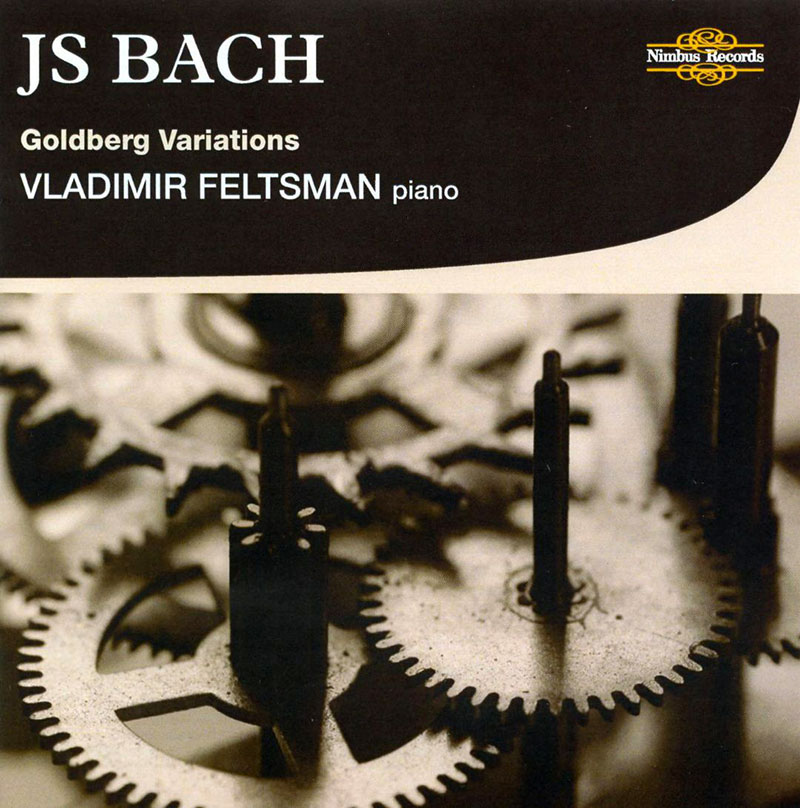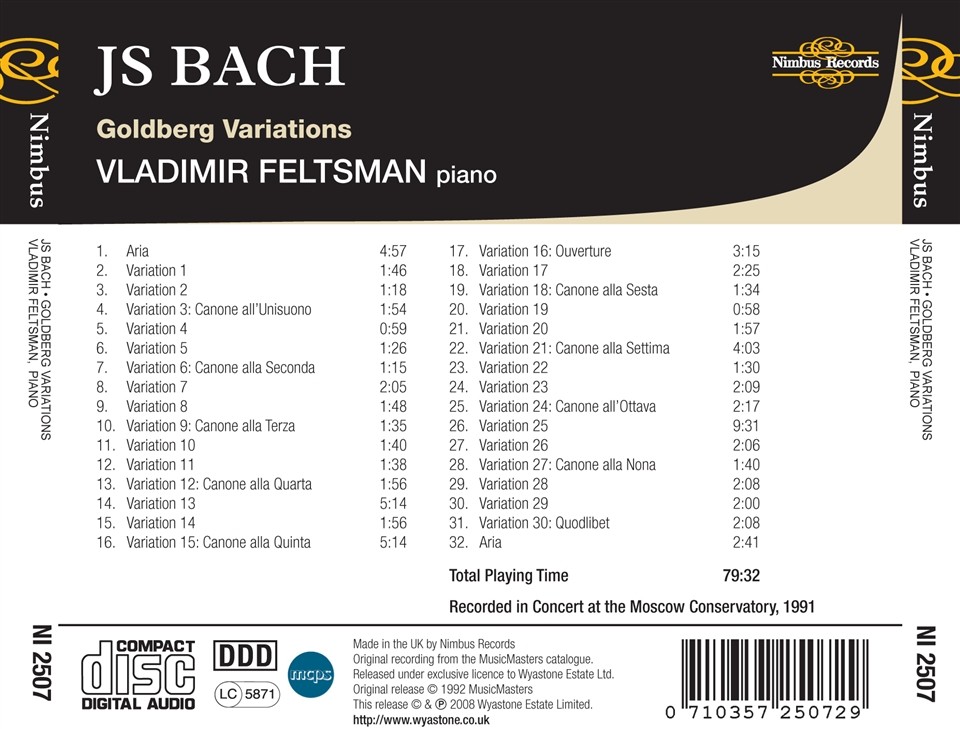Logowanie
Mikołaj - ten to ma gest!
Elton John, The Mamas & The Papas, Cat Stevens, Rod Stewart, Bobbie Gentry, Stevie Wonder, Engelbert Humperdinck
Memory Lane
Edycja Numerowana - 1000 egzemplarzy w skali światowej
RACHMANINOV, Eiji Oue, Minnesota Orchestra
Symphonic Dances / Vocalise
Best Recordings of 2001!!! NAJCZĘŚCIEJ KUPOWANA PŁYTA Z RR!
Karnawał czas zacząć!
Music of Love - Hi-Fi Latin Rhythms
Samba : Music of Celebration
AUDIOPHILE 24BIT RECORDING AND MASTERING
CHOPIN, LISZT, DEBUSSY, DVORAK, Gerhard Oppitz
Dances romantiques - A fantastic Notturno
Wzorcowa jakość audiofilska z Clearaudio
Winylowy niezbędnik
ClearAudio
Double Matrix Professional - Sonic
najbardziej inteligentna i skuteczna pralka do płyt winylowych wszelkiego typu - całkowicie automatyczna
BACH, Vladimir Feltsman
Goldberg Variations

- 1 Goldberg Variations Aria 4:57
- 2 Variation 1 1:46
- 3 Variation 2 1:18
- 4 Variation 3: Canone all’Unisuono 1:54
- 5 Variation 4 0:59
- 6 Variation 5 1:26
- 7 Variation 6: Canone alla Seconda 1:15
- 8 Variation 7 2:05
- 9 Variation 8 1:48
- 10 Variation 9: Canone alla Terza 1:35
- 11 Variation 10 1:40
- 12 Variation 11 1:38
- 13 Variation 12: Canone alla Quarta 1:56
- 14 Variation 13 5:14
- 15 Variation 14 1:56
- 16 Variation 15: Canone alla Quinta 5:14
- 17 Variation 16: Ouverture 3:15
- 18 Variation 17 2:25
- 19 Variation 18: Canone alla Sesta 1:34
- 20 Variation 19 0:58
- 21 Variation 20 1:57
- 22 Variation 21: Canone alla Settima 4:03
- 23 Variation 22 1:30
- 24 Variation 23 2:09
- 25 Variation 24: Canone all’Ottava 2:17
- 26 Variation 25 9:31
- 27 Variation 26 2:06
- 28 Variation 27: Canone alla Nona 1:40
- 29 Variation 28 2:08
- 30 Variation 29 2:00
- 31 Variation 30: Quodlibet 2:08
- 32 Aria 2:41
- Vladimir Feltsman - piano
- BACH
I was initially awakened to this piece by Glenn Gould’s first recording many years ago on Columbia, which I still like. I was 17 at the time and started working on it right away, although I didn’t play it in public until seven or eight years later. The Goldberg Variations are very special to me; I’ve actually been studying them now on and off for nearly two decades. And since my arrival in the U.S. five years ago I’ve been deeply involved with them. I’ve played them all over Europe, including the Moscow Conservatory, where this recording was made. ------------------------------------------------------ “Feltsman’s touch is very deliberate, delicate, and of weightless elegance in the aria, though never ‘precious’. Very early on it becomes clear that Feltsman plays Bach more as if he were on a harpsichord than any pianist I have heard, but he doesn’t do it in the Gould way of trying to make the piano sound like the harpsichord it isn’t. No repeat is exactly as the first – there are always changes in registration, ornamentation, or voicing – sometimes all of them together. That can sound idiosyncratic, even here, but sufficient musical sensibility and taste prevent the playing from ever becoming a display of wayward vulgarity. Because you are always expecting something new, it makes for very alert ears. Undoubtedly a happy surprise – and one of the most charming piano accounts I have heard in a long time.” Jens F. Laurson, MusicWeb International Issued now, on Nimbus, is Vladimir Feltsman’s recording of the Goldberg Variations which was once available on MusicMasters and through the Musical Heritage Society. In more than one regard, there are parallels to his younger Russian colleague Lifschitz, whose recording is also live, also recorded at the Conservatory also observes all the repeats, and also employs mock register changes. Feltsman’s touch is very deliberate, delicate, and of weightless elegance in the aria, though never ‘precious’. Very early on it becomes clear that Feltsman plays Bach more as if he were on a harpsichord than any pianist I have heard, but he doesn’t do it in the Gould way of trying to make the piano sound like the harpsichord it isn’t. No repeat is exactly as the first – there are always changes in registration, ornamentation, or voicing – sometimes all of them together. That can sound idiosyncratic, even here, but sufficient musical sensibility and taste prevent the playing from ever becoming a display of wayward vulgarity. As far as piano interpretations are concerned, his is as far away as can be from the overt and, dare I say: schmaltzy. His ‘stubbed out’ fourth variation doesn’t glide by, it happily, haltingly bops along. Variation 14 is particularly colorful as notes twitter at the listener from all registers. Bringing the Goldberg Variations – with all repeats – in under 80 minutes speaks of the nimble fingers that Feltsman employs often, but not throughout nor indiscriminately. He is very audibly unconcerned about getting things ‘done in time’ whenever he lingers, as for example in variation 15. Because you are always expecting something new, it makes for very alert ears. Undoubtedly a happy surprise – and one of the most charming piano accounts I have heard in a long time. If repeat listening will prove to be as enjoyable as the first impression was good I can’t tell, but I know that I will listen to it repeatedly – and gladly – until I know. Jens F. Laurson, Musicweb-international.com





























